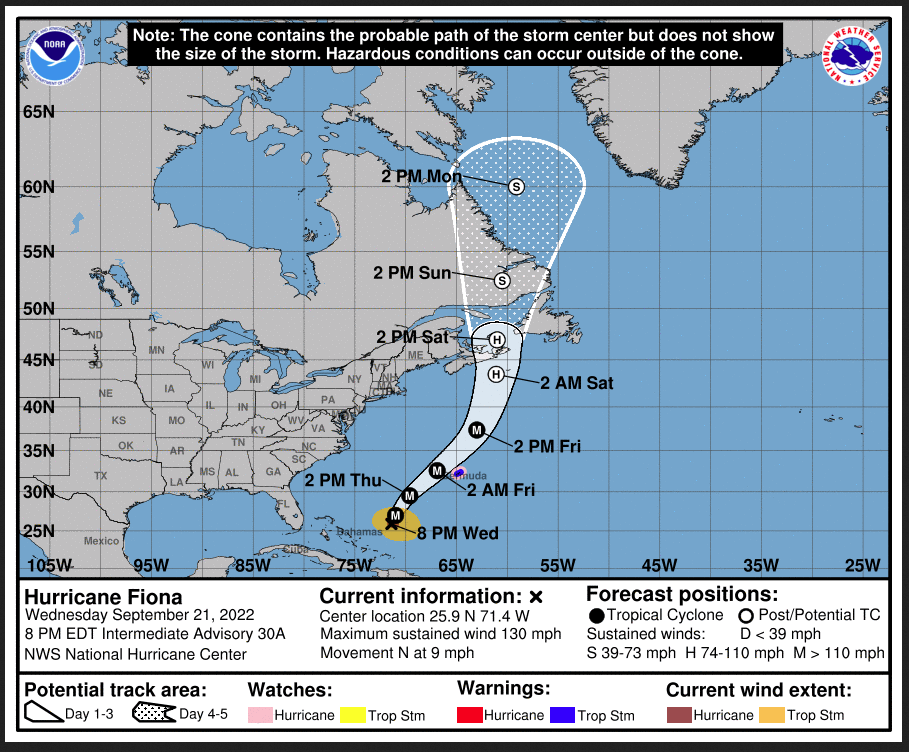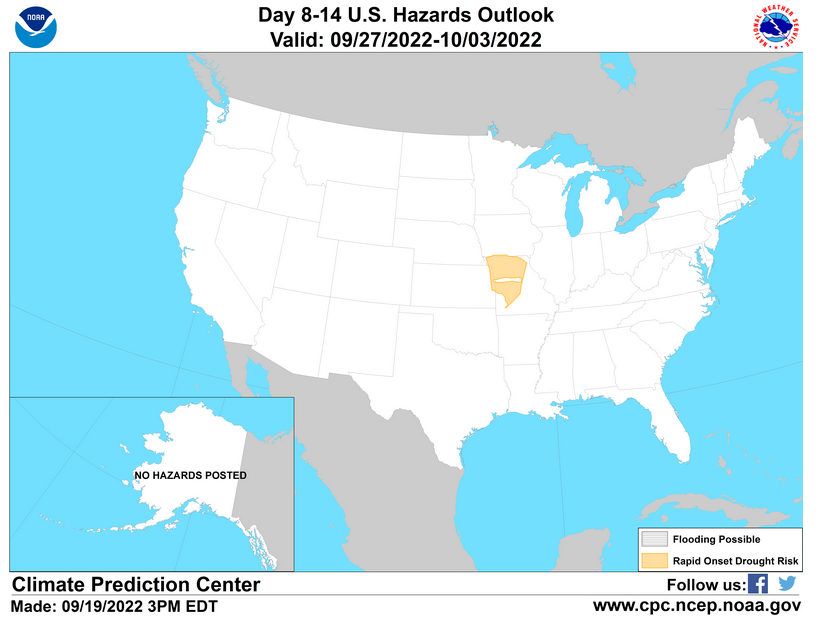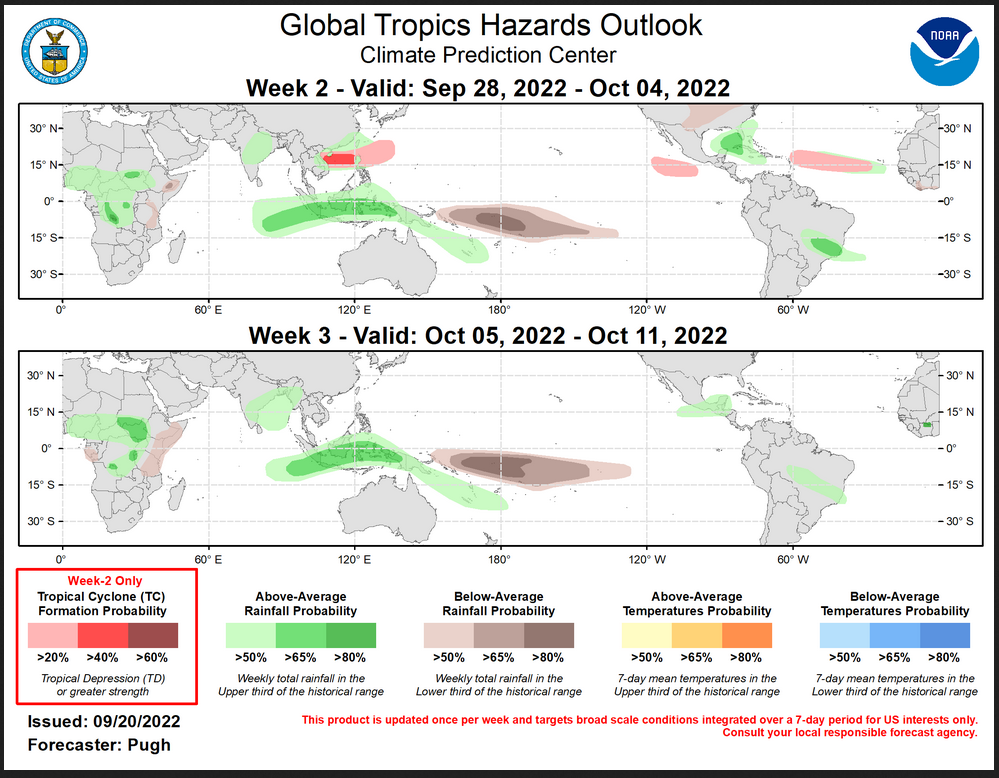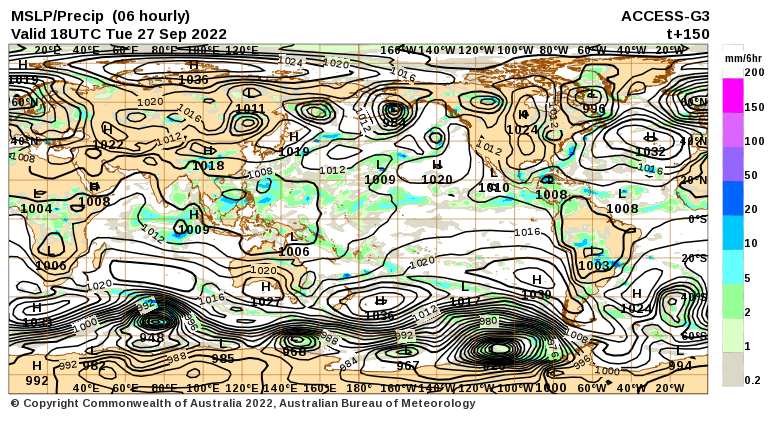Here is what we are paying attention to this evening and the next 48 hours from this afternoon’s NWS Forecast.
...Moderate Risks of excessive rainfall/flash flooding continue across parts of the Four Corners states into Thursday along with potential severe weather through this evening... ...Showers and storms that could be severe will move across the Northeast through tonight and into tomorrow... ...Record-breaking warmth will continue across the south-central U.S. into Friday...
Continuation of the NWS Short Range Forecast (It is updated twice a day and these updates can be found here.
A deep upper-level low for this time of year is forecast to track across the Northwest over the next couple of days as a low pressure/frontal system tracks just ahead of it in the West. These features and ample moisture originating from the tropics will continue to lead to widespread heavy rainfall across portions of the West through tonight and into Thursday. A large Moderate Risk of excessive rainfall is in effect through tonight for much of the Four Corners states, while a Slight Risk of flash flooding covers the Northern Rockies and a Marginal Risk for isolated flash flooding reaches the Great Basin. Additionally, there is a threat for severe weather through this evening particularly across south-central Idaho and northern Utah, where Marginal to Slight Risks of severe weather (particularly wind and hail) are in place from the Storm Prediction Center. The severe threat is expected to diminish by Thursday, but flash flooding will remain a likely hazard. A Moderate Risk has been added for Thursday for southwestern Colorado, where very heavy rain is forecast, surrounded by a Slight Risk spreading into northern New Mexico. Farther north, rain totals could cause some flash flooding as well, so another Marginal to Slight Risk is in place for the Northern Rockies to northern High Plains. Particularly sensitive areas such as burn scars are at risk for flash flooding, along with the possibility for flooding of roads, urban areas, streams, and possibly rivers. Meanwhile in the East, another frontal system is tracking through the Upper Ohio Valley and Northeast through tonight and into Thursday, leading to scattered thunderstorms there. The Storm Prediction Center has delineated a Slight Risk of severe weather for parts of Ohio, Pennsylvania, and New York as storms occur in these areas this evening. Tornadoes, high winds, and hail are all potential threats, and isolated flash flooding is also possible. Lighter lake-enhanced showers are expected behind the main front on Thursday, but thunderstorms will be pushed southward by a front into parts of the Mid-Atlantic by then, with a lingering Marginal Risk of severe winds. Elsewhere, scattered showers and thunderstorms are possible across southern Florida, and as the western low pressure system moves into the central U.S. Friday, this could spread some rain to the Midwest. The main concern regarding temperatures will be with much above average temperatures for fall over the Southern Plains and Lower Mississippi Valley with an upper high aloft. Temperatures this afternoon are soaring well into the 90s with some places exceeding 100s for highs, which could set multiple daily records. Warm temperatures are even spreading into the Ohio and Tennessee Valleys today, but these areas will drop into the 60s and 70s for highs Thursday behind a potent cold front, while the core of this cool air will be across the Central Plains with highs nearing 30 degrees below average. Farther north, chilly lows have led to the issuance of a Frost Advisory for parts of the Dakotas and northern Minnesota for early Thursday morning. Friday looks to spread cooler than normal temperatures across most of the Eastern Seaboard as well, with the exception of Florida. Meanwhile Texas into Oklahoma look to be south of this front and remain well into the 90s through Friday.
Current forecast of track and other information
Maps that relate the forecast to geography can be found by clicking Here for Day 1 and Here for Day 2.
Here is a 60-hour animated forecast map that shows how the short-term forecast is expected to play out.
If it needs to be updated click here.
HAZARDS OUTLOOKS
Click here for the latest complete Day 3 -7 Hazards forecast which updates only on weekdays. Once a week probably Monday or Tuesday I will update the images. I provided the link for readers to get daily updates on weekdays. Use your own judgment to decide if you need to update these images.
Worldwide Tropical Forecast
(This graphic updates on Tuesdays) If it has not been updated, you can get the update by clicking here This is a new approach and covers weeks 2 and 3 not weeks 1 and 2. It has more information but I am having trouble getting used to it. As usual, it comes with a discussion so I thought I would show that discussion tonight. I will not do that every night but if you click the link you will have that discussion.
Outlook Discussion Last Updated – 09/20/22
Valid – 09/28/22 – 10/11/22
The Madden-Julian Oscillation (MJO) weakened during early to mid-September which is likely due to destructive interference with the ongoing La Nina. The 200-hPa Velocity Potential field depicts very small anomalies throughout much of the global tropics with the largest anomalies, associated with upper-level divergence, centered over the Maritime Continent. Although enhanced low-level trade winds remain anchored across the equatorial central Pacific, anomalous 200-hPa easterly winds shifted east to 150E for the first time since early June. This may indicate that a remnant MJO signal is propagating eastward across the Pacific to the Americas during mid-September. Objective wavenumber-frequency filtering of the CFS and ECMWF models depicts this remnant MJO, albeit in a weakened state, shifting east over the Western Hemisphere during the next two weeks and then crossing Africa to the Indian Ocean by week-3. The ECMWF and GFS models depict anomalous low-level westerlies and reduced wind shear over the East Pacific, Caribbean Sea, and parts of the tropical Atlantic during the next two weeks. These model projections along with the background state of La Nina is expected to support a fairly active period in the Atlantic basin through at least the beginning of October. On September 14, Tropical Depression Seven developed over the tropical Atlantic and strengthened to a Category-1 Hurricane Fiona a few days later. Fiona tracked across Puerto Rico and then made a second landfall in the Dominican Republic. As of September 20, Fiona is forecast to strengthen to a Category-4 hurricane and track northward to near Bermuda later this week. Tropical Depression 8 formed on September 20 in the subtropical central Atlantic and is forecast to track northeastward. A couple of tropical cyclones, the 13th and 14th of the 2022 season, formed over the East Pacific during the past week. In the West Pacific, Typhoon Nanmadol recently made landfall in the Kyushu Islands of southern Japan.
The National Hurricane Center (NHC) is currently monitoring a tropical wave located several hundred miles east of the Windward Islands. Since this system is likely to become a tropical cyclone late in week-1, no tropical cyclone (TC) development area is posted for the Caribbean Sea during week-2. This disturbance should be monitored closely as it is expected to enter a favorable environment for strengthening heading into week-2 and could eventually impact areas of the Caribbean and southeastern United States. Multiple tropical waves are forecast to emerge from western Africa during the next two weeks and background state is expected to be conducive for one of these waves to develop across the Main Development Region of the Atlantic during week-2. Due to uncertainty on location at this time lead, a 20 percent chance over a broad spatial extent is posted. By week-3 (Oct 5-11), the main focus for TC development in the Atlantic basin climatologically shifts to the western Caribbean.
In the East Pacific, NHC is monitoring a couple of areas of low pressure for TC development during the next five days. Since any development is expected to be slow to occur and may not occur until early week-2, a 20 percent chance of genesis is designated for week-2. Dynamical models support a broad 20 percent chance of TC development across parts of the West Pacific during week-2, while a model consensus and continuity increases chances to 40 percent across the South China Sea.
The precipitation outlook during weeks 2 and 3 are largely based on La Nina precipitation composites and a historical skill-weighted blend of GEFS, ECMWF, CFS, and Canadian ensemble forecasts. Most likely TC tracks were also considered heading into the week-2 period. For hazardous weather concerns in your area during the next two weeks, please refer to your local NWS office, the Medium Range Hazards Forecast from the Weather Prediction Center (WPC), and the CPC Week-2 Hazards Outlook. Forecasts issued over Africa are made in coordination with the International Desk at CPC.
Detailed Maps and Reports for the Western Atlantic and the Pacific Oceans
Below are three maps that summarize the situation for the Atlantic, Eastern and Central Pacific. Additional information can be accessed by clicking HE RE
First the Atlantic
Click to view the forecast map and have access to additional information https://www.nhc .noaa.gov/gtwo.php?basin= atlc&fdays=5
Then Eastern Pacific
Click to view the forecast map and have access to additional information https://www.nhc.noaa.gov/gtwo.php?basin=epac&fdays=5
Then Central Pacific
Click to view the forecast map and have access to additional information https://www.nhc.noaa.gov/gtwo.php?basin=cpac&fdays=5
And the Western Pacific
Click to view the forecast map and have access to additional information https://www.metoc.navy.mil/jtwc/jtwc.html
Some Intermediate-Term Outlooks
Links to “Outlook” maps and discussions for three time periods. Days 6 – 10, Days 8 – 14, and Weeks 3 and 4. An outlook differs from a forecast based on how NOAA uses these terms in that an “outlook” presents information from deviation from normal and the likelihood of these deviations.
You have to click on the links because they do not update automatically and I do not want to have stale images in the article. But it is not difficult to click on a link and you get a large image plus a discussion. On Fridays in a separate article, we will show the images and provide a link in this article that article. But remember what you will see is the images as of Friday. But here you can get the current images simply by clicking on them. Then hit the return arrow at the upper left of your screen to return to the article. You will not find this information easily anywhere else.
Right now you can find these maps here (We show them every Friday there but you can click above and find them).
World Forecast for Day 6 (Currently Set for Day 6 but the reader can change that)
World Weather Forecast produced by the Australian Bureau of Meteorology. Unfortunately, I do not know how to extract the control panel and embed it into my report so that you could use the tool within my report. But if you visit it Click Here and you will be able to use the tool to view temperature or many other things for THE WORLD. It can forecast out for a week. Pretty cool. Return to this report by using the “Back Arrow” usually found top left corner of your screen to the left of the URL Box. It may require hitting it a few times depending on how deep you are into the BOM tool. Below are the current worldwide precipitation and air pressure forecasts for six days out. They will not auto-update and right now are current for Day 6. If you want the forecast for a different day Click Here I will try to update this map each day but you have the link so you can access the dashboard and get a wide variety of forecasts.I mostly rely on the reader to interpret world maps. For this map, areas of expected precipitation for the date and time shown are clearly shown. The number of High-Pressure systems shown is called the Wave Number. Maybe I will discuss WN someday. But it shows how many Rossby Waves there are around the World. Sometimes they are hard to count. Counting Low-Pressure systems should provide the same WN. Rossby Waves are the way the temperature distribution of the Planet remains in balance. It is basically the science of fluid dynamics. It can be very helpful in predicting the movement of weather patterns. You can snip an area of interest and move it into MS Paint and enlarge it.
Month to Date Information
Month to date Temperature can be found at https://hprcc.unl.edu/products/maps/acis/MonthTDeptUS.png
Month to date Precipitation can be found at https://hprcc.unl.edu/products/maps/acis/MonthPNormUS.png








